![]()
![]()
![]()
Use LEFT and RIGHT arrow keys to navigate between flashcards;
Use UP and DOWN arrow keys to flip the card;
H to show hint;
A reads text to speech;
12 Cards in this Set
- Front
- Back
|
Interaction webs |
Used to assess how interaction affects communities. |
|
|
Trophic vs Non-Trophic Interactions |
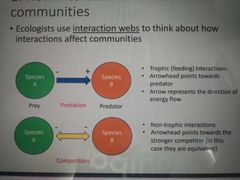
|
|
|
Direct vs Indirect Effects |
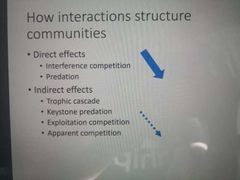
|
|
|
Interfere Competition |
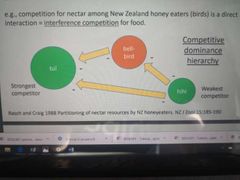
- Direct physical interaction - Individuals fighting over limited resources. - Often asymmetric (one species is a better competitor than the other.
|
|
|
Predation |
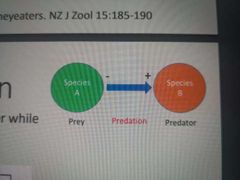
- Direct - One individual eats another while it is alive. |
|
|
Trophic Casacade |
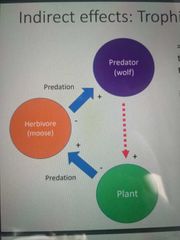
- Indirect - When predators suppress their prey, releasing lower trophic levels. |
|
|
Keystone Predation |
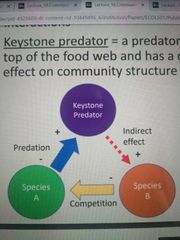
- Indirect - A predator (usually top food web), has a disproportionately large effect on community structure relative to its abundance. - eg start fish prevent mussels from out competing.
|
|
|
Exploitation Competition: |

- Indirect - Competition through shared limiting resources. -One competitor exploits the resources, negatively effecting the second competitor. |
|
|
Apparent Competition |
- Indirect - Increase in pop of one prey species causes decrease in another prey species, due to shared predator. - eg: beach seeds, mice and native birds > stoats |
|
|
Competitive Dominance |
- When one competitor is better than the other, it is the dominant competitor. |
|
|
Removal Experiment |
- Manipulating a community by removing certain components. - Removing keystone Predator (starfish) from tide pool community causes mussels to outcompete all other sessile organisms, significantly reducing diversity. |
|
|
Heirarchies |
Determines which species are the greater competitor and who will out compete who. |

